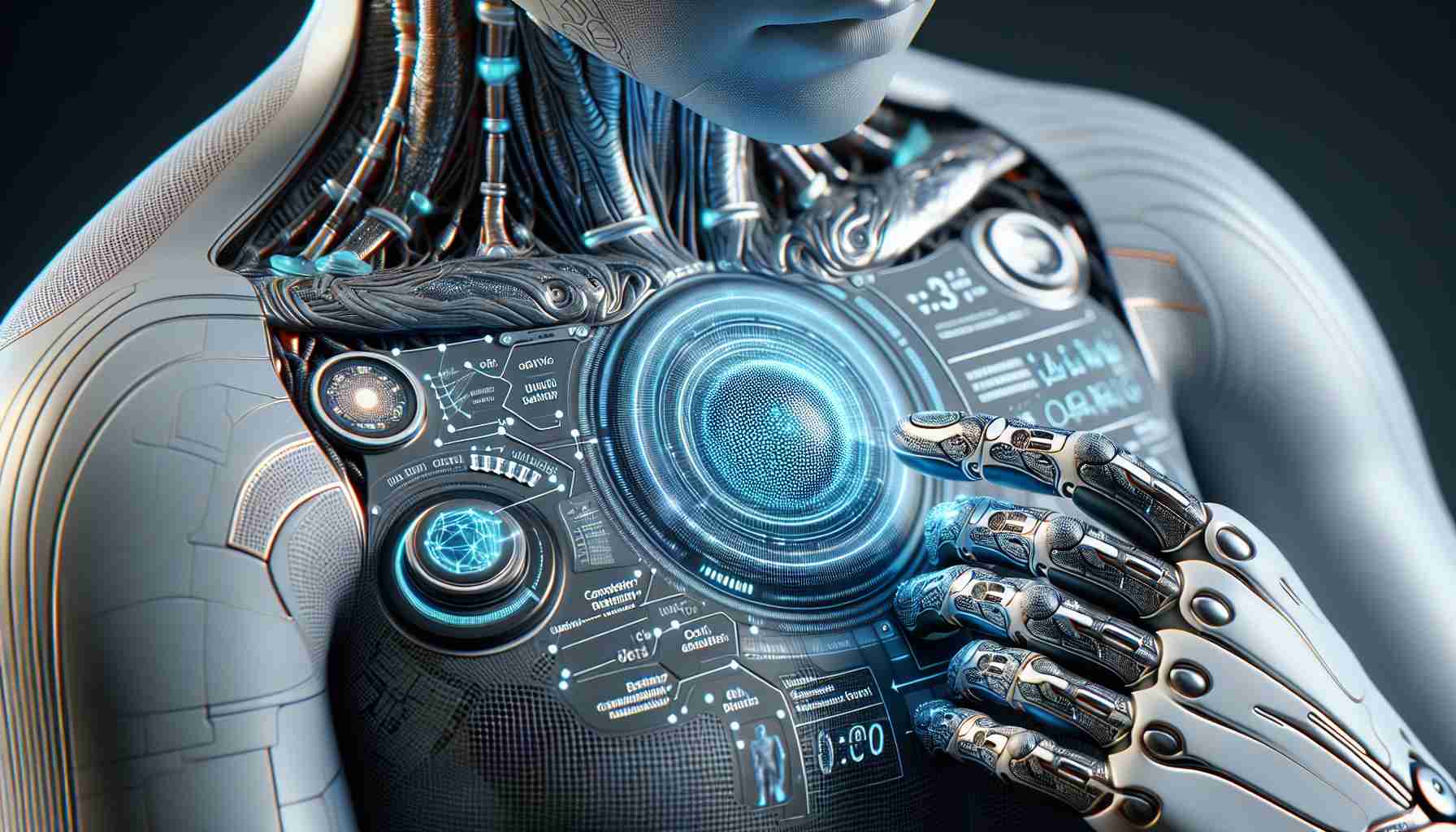- The Optical Microfiber Array Skin (OMAS) mimics human tactile sensations, revolutionizing robot interaction with their environment.
- OMAS uses advanced optical technology to replicate the human ability to detect textures and pressures accurately.
- This bionic skin overcomes limitations of traditional electrical sensors, such as corrosion sensitivity.
- In tests, OMAS achieved 100% shape recognition and 98.5% fabric texture identification accuracy.
- Potential applications include smart wearables, virtual reality, and enhanced robotic sensing capabilities.
- The ongoing research suggests future deployment in complex environments like underwater or space exploration.
Imagine a future where robots can feel and understand the world around them just like we do. A groundbreaking study introduces Optical Microfiber Array Skin (OMAS)—an innovative bionic skin designed to replicate human-like tactile sensations. Researchers from the National University of Defense Technology have created this high-tech skin, which is set to revolutionize how machines interact with their environment.
Human skin can detect a variety of textures and pressures thanks to over 20,000 tactile receptors that relay information to the brain. Inspired by this natural marvel, researchers developed OMAS using advanced optical technology, allowing robots to perceive shapes, hardness, and surface textures with astonishing accuracy. This artificial skin doesn’t just imitate human touch; it does so more efficiently by avoiding common issues faced by traditional electrical sensors, such as sensitivity to corrosion and electromagnetic interference.
In experiments, OMAS demonstrated a 100% recognition rate for various object shapes and a remarkable 98.5% accuracy in identifying different fabric textures—truly a leap forward in robotic sensory perception. When integrated into a robotic hand, it successfully recognized and differentiated between game pieces, showcasing its potential in real-world applications.
This exceptional technology holds incredible promise across fields like smart wearables, virtual reality, and robotic sensing. As researchers continue to refine this tactile skin, the next frontier could lead to its deployment in challenging environments like underwater exploration or outer space.
Stay tuned—this is just the start of a touchy-feely revolution in robotics and human-computer interaction that could change the way we live and work!
Revolutionizing Robotics: The Future of Touch with Optical Microfiber Array Skin
Introduction to Optical Microfiber Array Skin (OMAS)
Imagine a world where robots can feel and understand their surroundings akin to human beings. A pioneering development in this domain is the Optical Microfiber Array Skin (OMAS), a bionic skin crafted by researchers from the National University of Defense Technology. This innovative technology mimics human-like tactile sensations and is poised to redefine how machines interact with their environment.
Technical Innovations and Features of OMAS
OMAS is not just another sensor; it uses advanced optical technology to replicate the human sense of touch. Human skin is equipped with over 20,000 tactile receptors that relay sensory information to the brain, allowing us to identify textures and pressures. OMAS takes inspiration from this biological marvel and surpasses the capabilities of traditional electrical sensors, which often suffer from issues like corrosion sensitivity and electromagnetic interference.
Some of the standout features of OMAS include:
– High Recognition Rates: In experimental trials, OMAS achieved a 100% recognition rate for various object shapes and a 98.5% accuracy in texture discrimination, a significant achievement for robotic tactile sensors.
– Material Efficiency: The optical approach of OMAS reduces the likelihood of performance degradation over time, making it a durable alternative to conventional sensors.
– Versatile Applications: This technology is expected to have far-reaching implications across industries, from smart wearables and virtual reality to sophisticated robotic systems used in hazardous environments.
Use Cases and Market Predictions
The introduction of OMAS is set to create numerous applications in both everyday and specialized robotics. Here are some exciting use cases:
1. Medical Robotics: OMAS can enhance robotic surgery by providing surgeons with tactile feedback, helping them manipulate instruments more precisely.
2. Smart Wearables: Devices equipped with OMAS can offer personalized feedback on touch and sensation, improving user interaction and experience.
3. Robotics in Harsh Environments: This technology could be invaluable in areas like deep-sea exploration or space missions, where human touch is restricted.
Pricing and Market Insights
As OMAS technology continues to evolve, the pricing structure is expected to become more accessible. Current projections indicate that as production scales, the integration of OMAS into consumer electronics and industrial applications could lead to a significant drop in costs.
Trends and Future Directions
The future of robotics and human-computer interaction will be heavily influenced by advancements like OMAS. As engineers and researchers enhance this technology, we can expect further innovations in robotics, leading to machines that can operate with a human-like understanding of their environment.
3 Important Questions About OMAS
1. What challenges does OMAS face in real-world applications?
OMAS must address scalability for mass production, as well as the integration of its technology into existing systems without compromising cost-effectiveness.
2. How does OMAS compare to existing tactile sensing technologies?
OMAS excels in its durability and high recognition rates compared to traditional electrical sensors, which often fail due to environmental factors.
3. What future innovations can be expected with OMAS technology?
Future iterations of OMAS may incorporate features like temperature sensation and advanced haptic feedback, enhancing robotic capabilities in diverse fields.
For more insights into technological innovations and advances, visit MIT Technology Review.













